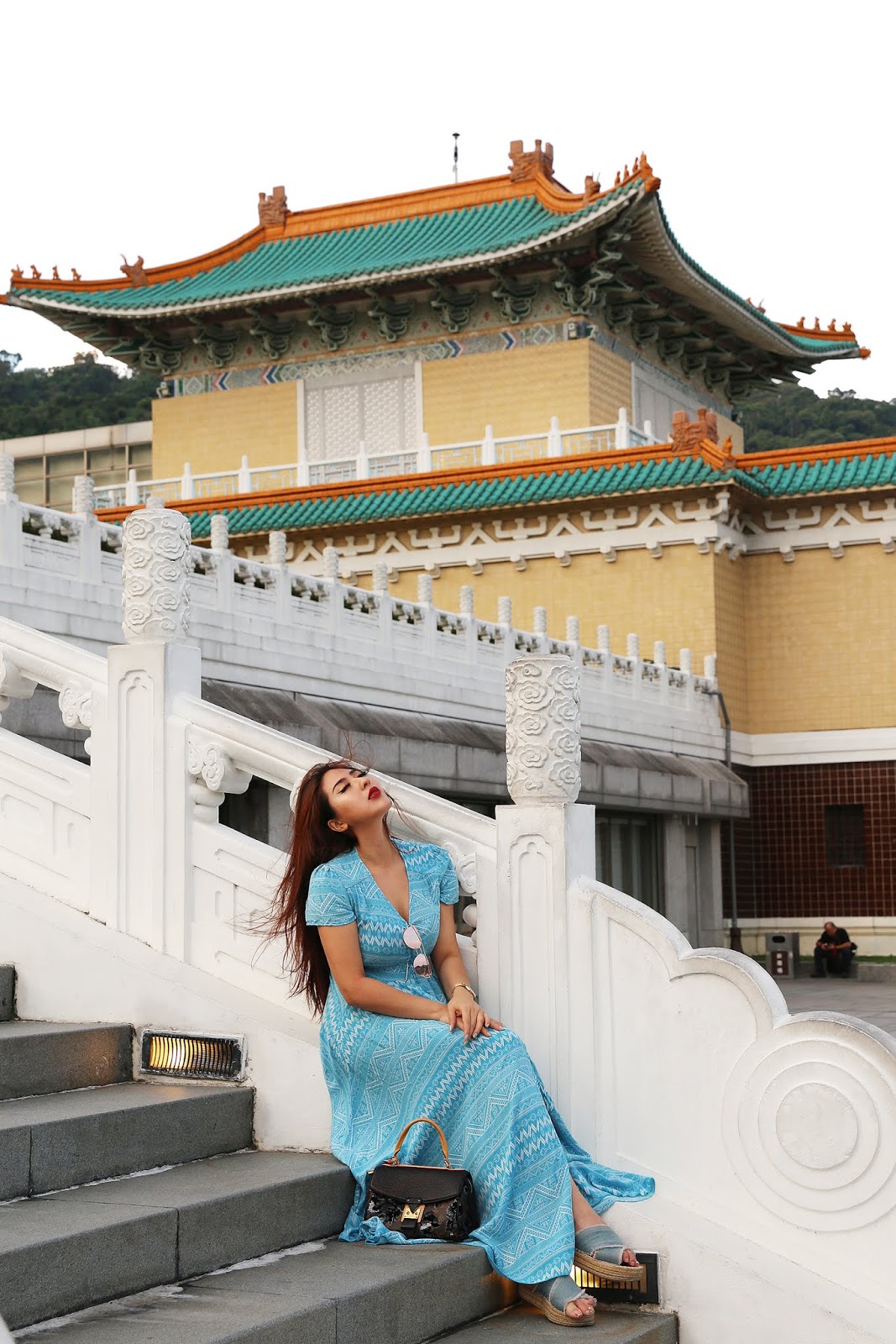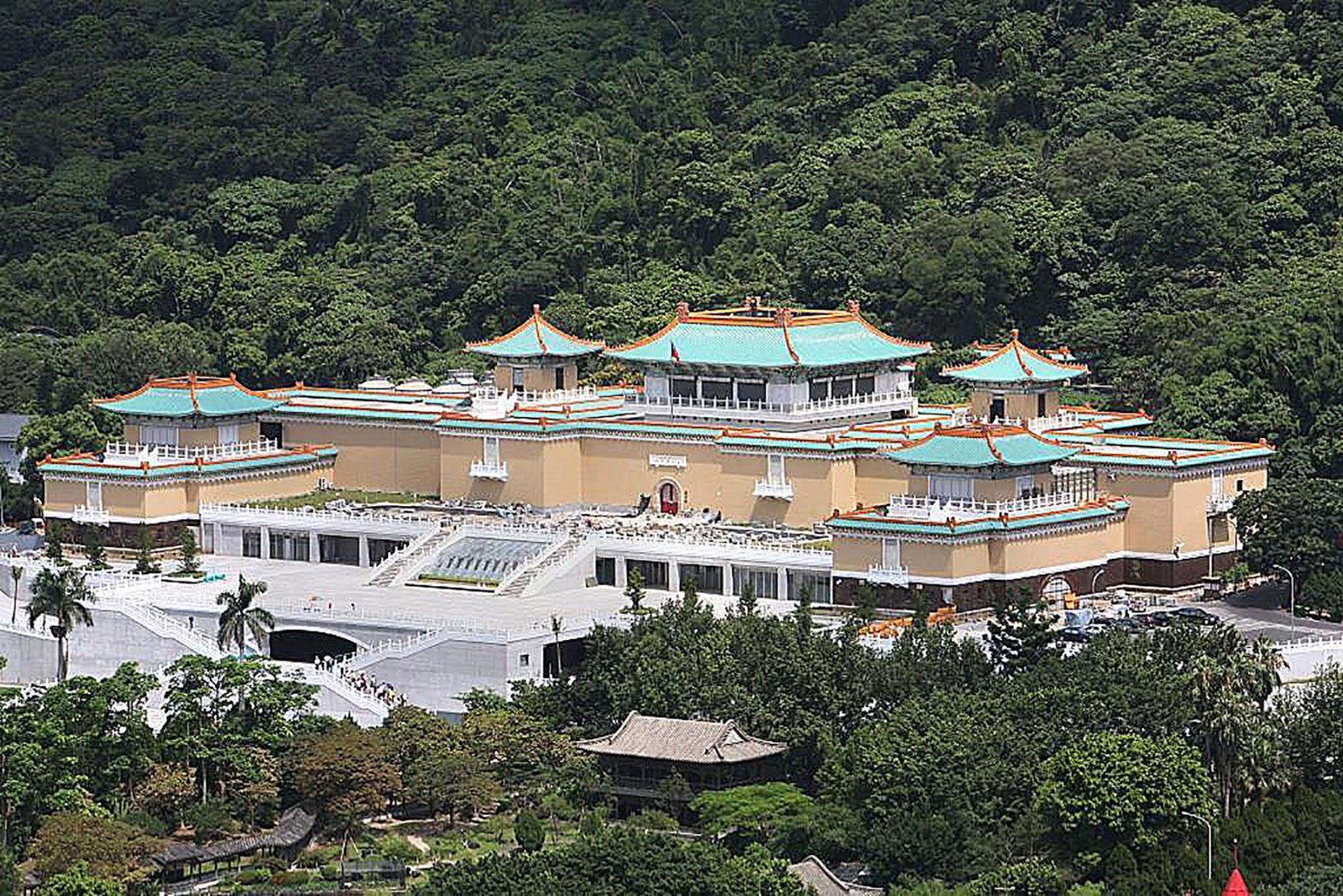A FEAST FOR THE EYES AND FOR THE STOMACH: CONSUMING THE WORLD’S GREATEST COLLECTION OF CHINESE ART AT THE NATIONAL PALACE MUSEUM & SILKS PALACE RESTAURANT IN TAIPEI, TAIWAN
My first impression of the gargantuan yellow and white Chinese-style building topped with green roofs was that it looked like a mountain sentinel. Rising from and sprawled out across the verdant hills of Taipei, the National Palace Museum is indeed a guardian - of the rich history of one of the world’s greatest civilisations. At a cursory glance, the Northern branch of the National Palace Museum in Taipei, Taiwan is the very image of stability, power, and longevity. However, this impressive complex belies the close call of its collection’s near-desecration and destruction at the hands of those who would have wiped out nearly ten millennia of history in the name of their so-called Cultural Revolution. The National Palace Museum in Taipei spoke to me, not only as a lover of art and history, but also as one of the greatest achievements of my great-grandfather’s party who sought to rescue and safekeep their beloved country’s legacy after it fell to the Communists. I spent a day in the National Palace Museum one of the most famous attractions of the Republic of China (Taiwan) and then an evening eating a tribute to some of its more precious artefacts at its luxury restaurant, Silks Palace. My idea of the perfect ways to take in art and history.
The National Palace Museum as we know it was born in post-Imperial China, shadowed by impending invasion, and barely survived the bloody revolution and cleansing of Chinese history and culture.The museum began life in 1925 as the National Beijing Palace Museum within the Forbidden City, following the expulsion of the last emperor. The contents of the museum (most of them objects belonging to the emperor) would enjoy less than a decade of relative peacetime. In 1933, Generalissimo Chiang Kai Shek's Nationalist Government had the Palace Museum evacuate its most valuable pieces to prevent them from falling into the hands of the Imperial Japanese Army. An astonishing number of 13,491 crates from the Palace Museum (among thousands others from various academies, palaces, and establishments) were moved in 5 groups to Shanghai.
Immediately after the surrender of the Japanese, the Chinese Civil War resumed. In 1948, when the fighting escalated between the Communist and Nationalist armies, the National Beijing Palace Museum and other five institutions made the decision to send some of the most prized items to Taiwan. Sadly, not all the pieces survived the red scourge - the Communist army seized control of the collection in Beijing. Only a fifth of the collection (a total of 2,972 crates) managed to escape Communist China and made it to what is now the National Palace Museum in Taipei, Taiwan. The artefacts that survived the Cultural Revolution is now the largest and arguably the best collection of Chinese art in the world. With 700,000 objects spread across 4 floors and 2 exhibition halls, the National Palace Museum is a comprehensive exhibit of Chinese history covering 8,000 years from the Neolithic period onward.
 |
| QING DYNASTY (1644 - 1911) CORAL PLANTER OF DEITY KUIXING The constantly-revolving display at the National Palace Museum is far too vast for me to document here. My personal favourite pieces were delicate porcelain vases including a Ming Dynasty (1506 - 1521) piece decorated with Arabic script (a testament to the crossing of cultures thanks to the Silk Road), 18th century Tibetan ceremonial objects presented as gifts to the Qing court, and of course the exquisite carvings the museum are so well known for. |

The Qing dynasty Jadeite Cabbage with Insects (above) is a tiny piece of jadeite carved into the shape of a Chinese cabbage head, with a locust and katydid camouflaged in the leaves. Carved from a single piece of half-white, half-green jadeite, the jadeite cabbage cleverly uses cracks and discoloured blotches to recreate the translucence, colour variation, and the veins of a real cabbage.
The Meat-shaped Stone (below) is another piece from the Qing dynasty. Carved from apiece of jasper into the shape of a Dongpo pork, the stone is astonishingly, mouth-wateringly realistic. The top layer, stained to look like skin of the meat, as well as various shades and hues accumulated naturally over the years, creates multiple layers that look tantalisingly like fat and meat.
The Meat-shaped Stone has been called the "most famous masterpiece" of the entire National Palace Museum and along with the Jadeite Cabbage and the Mao Gong Ding (Cauldron of Duke of Mao), is today called one of the Three Treasures of the National Palace Museum.
Sufficiently tantalised by the treasures of the National Palace Museum - and having displayed just enough willpower to not try to lick the Meat-shaped stone - my appetite was soon to be satiated at Silks Palace.
Silks Palace is the strategically-situated answer to a hungry end of a day perusing the exhaustive collection of National Palace Museum. The restaurant is located on the grounds of the museum itself in a shiny, ultra-modern glass building - you can’t miss the restaurant, its exterior is the furthest contrast to the traditional style of the museum. The restaurant is spread out over 4 floors: encompassing a food court, a grand dining room, a banqueting ballroom, and 10 private State Rooms. The setting is elegant and classical, with decorative motifs that nod to the museum’s collection of Chinese art: delicate wooden lattice screens and walls adorned in reproductions of Tang Dynasty paintings. My family and I (a party of 7) took up one of those State Rooms (below), where we could enjoy a languid dinner in a more intimate setting.
Much has been said about Silks Palace’s luxurious take on Taiwanese beef noodles and their famous mango custard. But it was their signature tasting menu that we were there for. The 9-course Imperial Treasures tasting menu are inspired by and designed to resemble some of the museum’s most precious exhibits - art-consumption at its most literal. Even the menus were works of art - bound in heavy white covers that unfurled to reveal a concertina of pages, with each dish depicted beside the work of art it is inspired by, accompanied by paragraphs describing the dishes themselves and the story of the artworks that inspired them. The menu (above) was about 7 feet tall and a gift for each diner to bring home as a souvenir for an already unforgettable meal.
The Silks Palace tasting menu was a decadent and elaborate event from start to finish. To tickle our tastebuds, a starter of 6 dishes including sea abalone, crispy pork belly, and a thick juicy scallop. Followed immediately by one of the star of the museum’s show - the Jadeite Cabbage made from, well, cabbage, with the tiniest shrimp to represent the locust. The other two of the Three Treasures of the National Palace Museum are also represented - with the restaurant’s take on Buddha Jumps Over the Wall served in a bowl inspired by Cauldron of Duke of Mao, and of course the famously evocative Meat-shaped Stone that launched a thousand salivations.
The attention to detail as well as the quality of the food made the tasting menu a true experience and not just a fun gimmick. Every dish was expertly cooked and delicately presented at an exceptional level.
1. Jadeite Cabbage with Dry Scallop Sauce - bok choy sum boiled in chicken & ham broth served with dry scallop sauce and shrimp. Inspired by Qing dynasty Jadeite Cabbage.
3. Steamed bitter melon stuffed with shrimp, in oyster sauce.
Inspired by Qing dynasty White Jade Branch of Elegant Lychee.
2. Buddha’s Tureen (Buddha Jumps Over The Wall) - a soup of bamboo pith, scallops, sea cucumber, abalone, chicken, jinhua ham, pork tendon, & mushrooms stewed for two days.
Inspired by Qing dynasty White Jade Branch of Elegant Lychee.
4. Braised pork knuckle broiled for 2 hours in secret sauce (scallions, soy, & others).
Inspired by Qing dynasty Meat-Shaped Stone.
Inspired by Qing dynasty Meat-Shaped Stone.
5. Yun Lin Goose steamed with honey, salt, scallions, peppers, wine, & chicken broth.
A well known traditional dish with a history of over 600 years.
6. Chicken wing stuffed with glutinous rice.
Stir-fried with ham, scallop, shrimp, then stuffed into meaty chicken wings and sealed. Drizzled with vinegar & maple syrup then deep-fried.
The tasting menu ended on a sweet note with not one but two puddings. An ice sculpture - Fruity Mao Kung-Ting, created by renowned ice-sculptor and award-winning chef Kuo Jin Long - inspired by a Ting cauldron swirled and steamed with all the flourish of a magic trick to reveal the prize within: a luscious, colourful selection of Taiwanese fruits.
For the final flourish, a Chinese Dessert Box was presented, heaving with tiny and exquisite classic Chinese desserts. Miniature pastries depicting swans, peaches, the Jadeite cabbage, and other snacks that Chinese emperors once enjoyed were presented like little treasures, begging to be plucked and savoured. A perfect round up to a dinner inspired by the imperial treasures of China.
My experience was at both National Palace Museum and Silks Palace Restaurant was truly satisfying and thoroughly gratifying. How often does one get to experience the greatest art collection of its kind and sample it in culinary form on the same day and within walking distance of each other? Needless to say, both destinations are a must for any visitor to Taipei - ideally with a visit to the museum in the day (after a light lunch) to give oneself at least 4 hours to peruse all the art followed by the 9-course Imperial Treasures tasting menu to reward oneself with.
The Silks Palace 9-course Imperial Treasures tasting menu is NT3,800 (£94) per person.The National Palace Museum is open daily from 08:30am to 6:30pm all year round, with extended hours (6:30pm - 9:00pm) on Fridays and Saturdays. Regular admission is NTD $350 (£9).


























